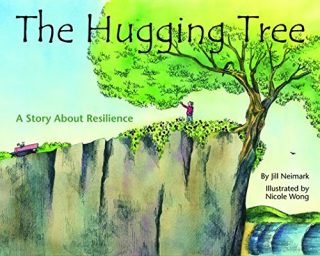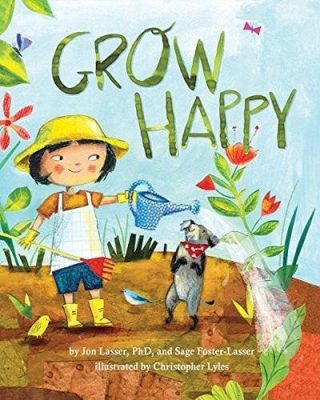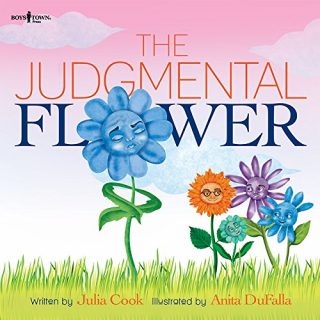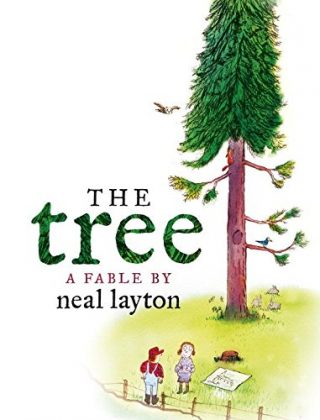Children’s Books Encourage a Healthy Dose of Nature
Posted in From the Library on August 15 2017, by Samantha D’Acunto
Samantha D’Acunto is the Reference Librarian at The New York Botanical Garden‘s LuEsther T. Mertz Library.
 The newest titles to the LuEsther T. Mertz Library circulating children’s collection share the many ways in which exposure to nature can be beneficial to your health. Nature can be healing to both the mind and the body and one is never too young to experience its benefits. Advanced readers interested in this topic may want to consider titles such as Last Child in the Woods and Nature Fix. The titles featured below are stories that encourage young readers to be socially aware of their surroundings as well as their mental and physical health.
The newest titles to the LuEsther T. Mertz Library circulating children’s collection share the many ways in which exposure to nature can be beneficial to your health. Nature can be healing to both the mind and the body and one is never too young to experience its benefits. Advanced readers interested in this topic may want to consider titles such as Last Child in the Woods and Nature Fix. The titles featured below are stories that encourage young readers to be socially aware of their surroundings as well as their mental and physical health.
The Hugging Tree: A Story of Resilience by Jill Neimark / Illustrated by Nicole Wong (2016)
Inspired by the work of child psychologist Ann S. Masten, Jill Neimark developed The Hugging Tree to explore a child’s ability to overcome difficult experiences. Like a small tree sapling battling the elements, children have an admirable resilience despite facing various difficulties. Readers are asked to join the tree sapling in braving the storm as the journey to become a strong beautiful tree is laid out on each page. With a little help and love from a young boy, the tree grows to be healthy and strong, providing a welcoming space for all who visit. The comforting tone of the poetic narrative written by Neimark is perfectly accompanied by the soft illustrations by Nicole Wong. The Hugging Tree is a gentle reminder that “Storms will come and storms will go.” The American Psychological Association recommends this book for reader’s ages 4 to 8, though this pairing is certain to offer hope and comfort to readers of all ages.
 Grow Happy by Jon Lasser and Sage Foster-Lasser / Illustrated by Christopher Lyles (2017)
Grow Happy by Jon Lasser and Sage Foster-Lasser / Illustrated by Christopher Lyles (2017)
Kiko’s garden needs care, love, and work. Garden chores help Kiko stay in shape, practice mindfulness, troubleshoot problems, and make good choices. Concentrating on these concepts helps Kiko grow happiness in her garden and within herself. The story aims to urge readers to cultivate what makes them happy just as they would in a garden by applying the practices Kiko follows. Grow Happy explores advanced psychological perspectives such as choice theory and positive psychology. To assist the understanding of these concepts a note to parents and caregivers is located at the back of the book, offering prompts that use the story to help apply the concepts covered. All readers could learn from Grow Happy, but like gardening it’s much more fun when you read it together.
 The Judgmental Flower by Julia Cook / Illustrated by Anita DuFalla (2016)
The Judgmental Flower by Julia Cook / Illustrated by Anita DuFalla (2016)
When a purple flower suddenly grows in a blue flower patch, the differences are all anyone can see. The purple flower soaks up the same water, dances in the same wind, and is visited by the same bees. So how different is the purple flower really? Being judgmental can make you grow in the wrong direction, so The Judgmental Flower asks readers to consider choosing to grow right. By talking openly about differences, treating others the way you wish to be treated, and building relationships, you can get to know others without prejudice. The Judgmental Flower drives home the message of acceptance and community, and it’s a simple but powerful story that children are likely to relate to. The conversation prompts at the very end of the book offer an opportunity to parents and caregivers to openly discuss issues surrounding prejudices with ease.
 The Tree: A Fable by Neal Layton (2016)
The Tree: A Fable by Neal Layton (2016)
After purchasing land, a couple has plans of building their dream home—the only thing standing in the way is a very large tree at the center of the property. As they begin their work, the couple discovers the tree is home to many creatures both below and up top! The birds, the squirrels, the owls, and the rabbits all flee from their residence. The couple is filled with emotion as they watch the animals uproot their families to find safe shelter. Shifting their plans slightly, the couple gets back to work as they build their dream home and homes for all the other families in the tree alongside their neighbors.
Neal Layton sends his readers a powerful message of awareness and respect for the nature around us. He uses simple imagery and narrative to suggest that people can coexist alongside nature without removing or disturbing it. The Tree, like all fables, leaves readers to reflect on the lessons the story offers for years to come.


Of the 5 books, only one includes the suggested age group. That would be very helpful in the future.